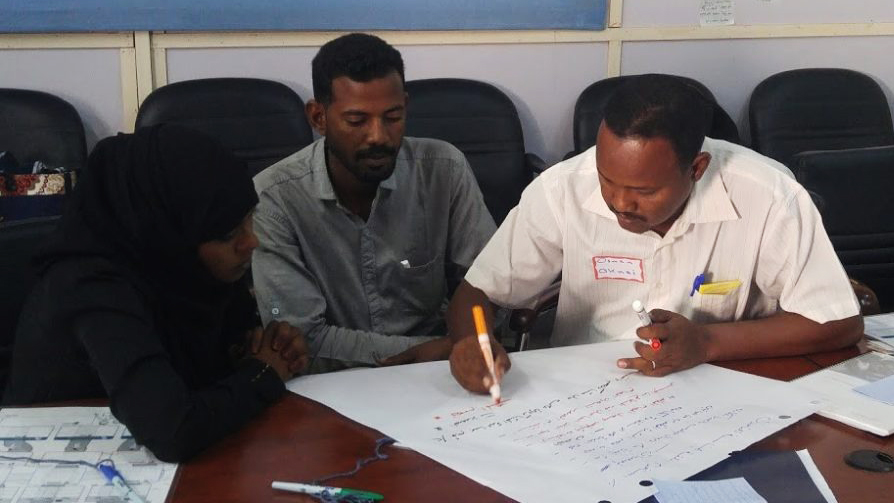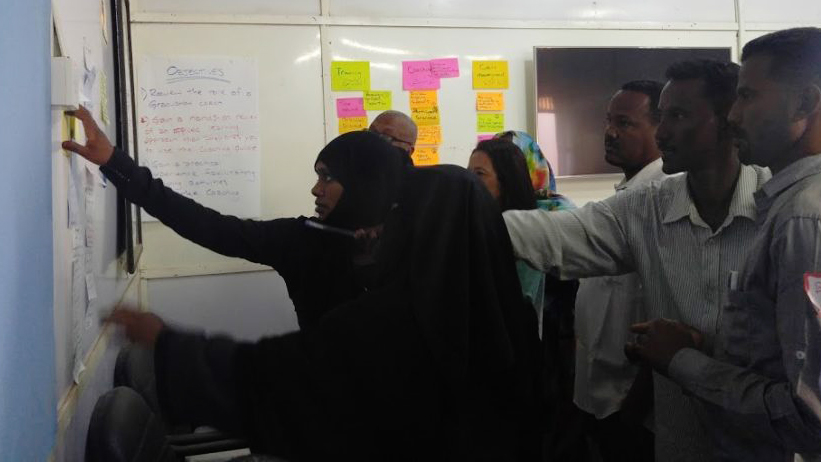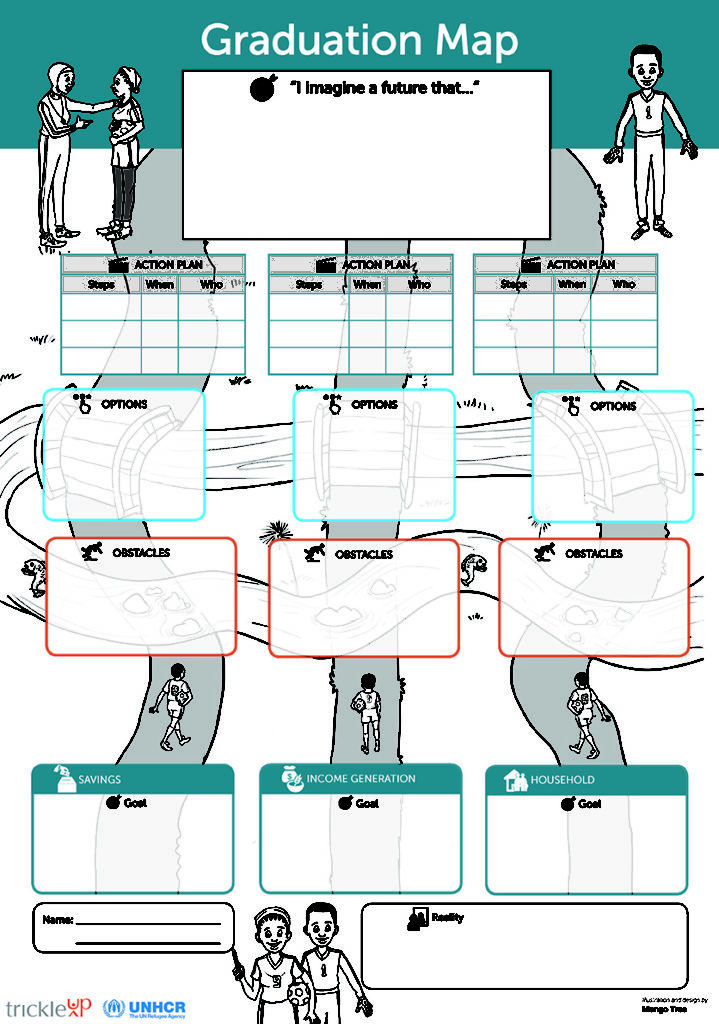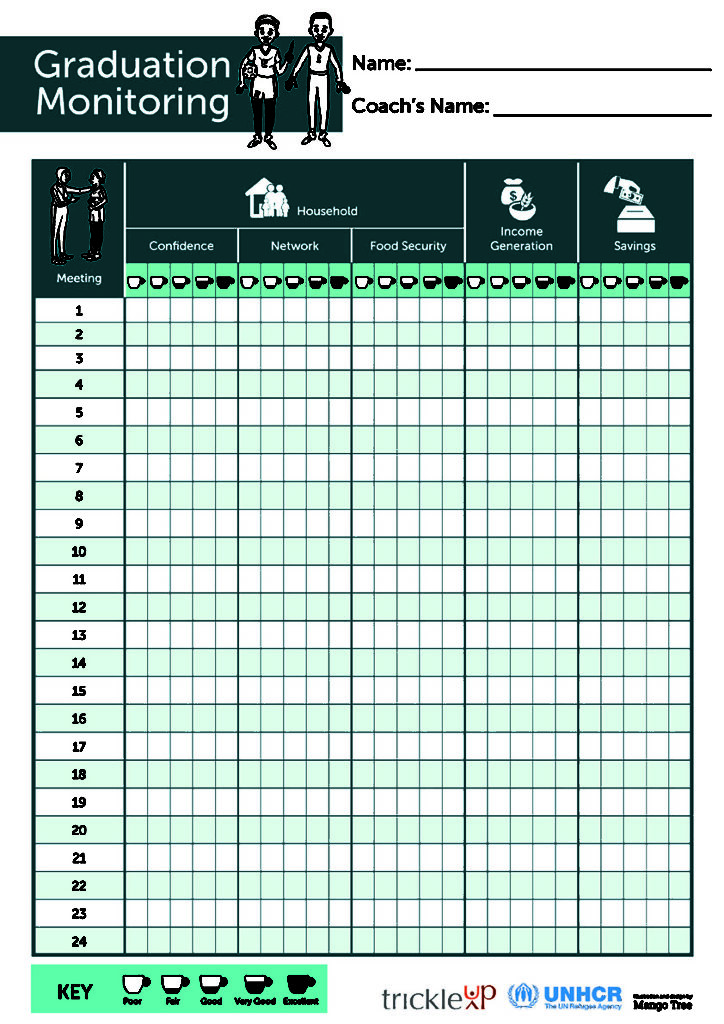Selma is one of the six inspiring young women and men who will be the front-line of the Graduation program implemented by the Sudanese Red Crescent Society (SRCS) and UNHCR, the UN Refugee Agency, in Kassala, Eastern Sudan. Each of these six Graduation coaches will work with 50 participants living in the Kilo 26 Camp, which hosts 12,500 of Sudan’s approximately 422,000 refugees.
Selma’s parents sought refuge in Sudan during the 30-year war between Ethiopia and its then province Eritrea, which gained independence in 1993. The average duration of protracted refugee situations globally is estimated at about 26 years; however, Eastern Sudan has hosted refugees from Eritrea since the late 1960s, making it one of the longest protracted refugee situations in the world.
Trickle Up is supporting UNHCR in the design and implementation of the new Graduation program in Sudan, with a particular focus on supporting the coaching component. During Trickle Up’s four-day workshop, I trained the newly recruited coaches on how to lead one-on-one conversations to explore participants’ income generating activities, savings aspirations, and household well-being. By modeling good coaching techniques, and giving them the opportunity to practice leading simulated coaching sessions themselves, we explored both good facilitation techniques and the more technical aspects of the job.
I introduced them to Trickle Up’s newest coaching tools, including an image-based Coaches Guide and an accompanying Graduation Map and Monitoring Tool, designed specifically for coaches like Selma to use in a refugee camp setting like Kilo 26.
What considerations go into the design of coaching tools?
In addition to ensuring the content itself is appropriate to the program, Trickle Up considers who will be facilitating the tools (coaches), who will be using them (Graduation participants), and where they will be used. For example:
Portable and Reusable – With seven household visits per day, coaches like Selma are always on the move. As such, all of their tools need to be lightweight and easy to pack. The Graduation Map is a laminated A3 that can be easily folded into a backpack for a bicycle or tuk-tuk ride. Participants are encouraged to draw on the Graduation Map to help keep track of their conversations and decisions. Dry-erase markers are used so that participants can make updates as their goals and plans evolve over time.
Three paths towards a better life – The Graduation Approach is a holistic intervention that puts equal emphasis on income generating activities, savings activities, and household well-being. To help ensure that coaches and participants are paying attention to each topic, the Graduation Map includes one path for each aspect of the participant’s life.
Pictures of a Coach and Participant – Like Selma, the coach depicted in the Graduation Map is a young woman wearing a hijab and holding a whistle (metaphorically in Selma’s case). The coach walks alongside her participants, many of whom are slightly older, male and female, with families of five or six.
The GROW Model – Unlike a training methodology, coaching aims to build on participants’ existing knowledge and skills to make informed and realistic decisions. The Graduation Map offers a visual depiction of the frequently used GROW model of coaching, wherein the coach leads the participant through an iterative exploration of her Goals, Reality, Obstacles, Options, and Way Forward.
Imagery – In some communities, concepts like obstacles and opportunities can be difficult for coaches to verbalize to participants. The use of boulders along the participant’s path or a stream that needs to be crossed symbolize the challenges they must overcome, helping coaches to better explain these ideas to participants, so participants can, in turn, better explain what obstacles or challenges they’re facing in their own lives.
Icons – While Selma and her colleagues in Eastern Sudan are literate, not all coaches have a formal education. Using the same icons throughout the Coaching Guide and Graduation Map helps lower-literacy coaches remember what they are supposed to be discussing with their participants at each stage of the program.
Space to Draw – Unlike Selma, most of the Graduation participants with whom she works have low literacy or are illiterate, especially women. To help them remember their conversations and agreed-upon action plans, participants draw directly onto the Graduation Map. They are encouraged to be creative and use whatever type of imagery will best help them remember their goals and commitments.
With brand-new coaching tools in hand, and invigorated after four intense days together, all six coaches are eager to get back to their community to start helping program participants define realistic goals and overcome obstacles faced along the way.
Working hand in hand with Selma and the other coaches, participants will spend the next two years graduating from situations of dependence on UNHCR and other humanitarian actors, into self-reliance, where they will be able to gain an income of their own and use it to support their households as they see fit. Personally, I am equally excited to see how these new coaching tools can help Selma and her colleagues lead 300 participants down a path to increased resilience and brighter futures.





